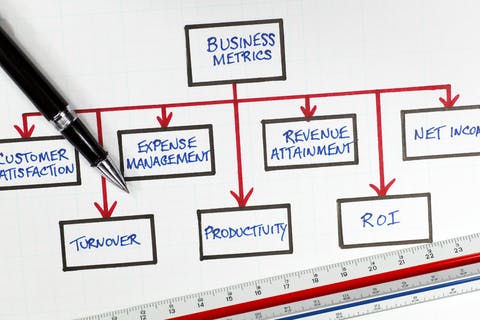Today, HR practitioners and senior executives are continuing to recognize the growing importance of metrics in effectively shaping the strategic position of an organization.
What once was used for simply measuring more traditional operational issues, such as time to hire and cost to hire, strategic measurement now gives HR a strong viable position at an organization’s leadership table. Long-term measurement of critical HR issues including employee engagement is vital to the culture and sustainability of an organization.
And while some organizations are still only employing traditional HR metrics and debating strategic HR measurement, successful organization have learned how to leverage these tools to transform their businesses from me-too organizations to market leaders.
But what if the metrics behind the dashboards aren’t right? Poorly designed metrics can do serious damage to a business. HR managers responsible for recruiting, employee engagement and compensation can be distracted from what really matters: overall human capital performance that increases the bottom line.
Here are some best practices to achieve quality metrics that HR executives and managers can rely on:
- Tie metrics to corporate business strategy. Too often, organizations show common, “cookie cutter” metrics for every project. A clear definition of the business strategy should precede the development of each set of metrics. If an organization is going global, it must assess the competence of its employees, identify the corporate global competence metric and prepare people for global assignments.
- Metrics should be concurrent and reviewed periodically. Far too often, programs are measured and evaluated at the end of the period. Take, for instance, important corporate mentoring programs that typically involve a post-evaluation. While future mentoring programs can be tweaked, post metrics don’t give the organization the ability to address issues and make changes concurrently.
- Metrics should be reliable. Reliability of metrics depends on the viability of underlying data and the composition of the metric. Preferably, the reliability should be scientifically tested. It should be evident that if employee engagement is high, customers should be satisfied and/or business performance should be healthy (barring uncontrollable circumstances). If this is not the case, the metric may need to be revisited and the underlying data examined.
- Metrics should be precise. All organizations seek to advance their performance agenda. A failure to be precise with metrics can lead to erroneous decisions, resulting in performance decline. It is not uncommon, for example, for organizations to measure their overall corporate culture. This by itself is not sufficient to make choices. The elements that make up the organization culture metric- e.g. integrity, trust, professionalism, learning, teamwork- should be specifically identified for easier intervention and improvement.
- Metrics should be hierarchical. Specificity of metrics is also useful for strategic thinking. For example an overall corporate culture metric will have layers of detailed metrics below it, and each of these would have other layers of specificity. Drilling down from the most aggregate measure (highest level in the hierarchy) to highly specific ones makes it easier to take corrective action(s). For example, teamwork – an organization culture element – can be further analyzed by looking at the underlying components, such as collaboration, empowerment, friendliness and creative tension.
- Metrics should reinforce competitive advantages. Metrics should reflect an organization’s differentiation and competitive advantage. Apple is best known its commitment to creativity and innovation. Apple’s creativity/innovation indices will reflect its competitive advantages of being able to stay ahead of competitors through new product offerings. In other words, there should always be a relationship between competitive advantages and measures of human capital.
- Establish a common value/scale. All metrics should be normalized to a common value. The best such value is 100 with a scale of 0 to 100. By having a common scale, users do not need mathematical calisthenics to compare one metric with another.
- Use metrics as internal benchmarks. Accurate assessment of interventions/initiatives can come from continuous metric development. And, the common value scale allows for easy comparisons over time. Imagine being able to see metric changes historically- it provides a clean glimpse of progress and validates the progress.
- Simplify dashboards and reports. Pretty charts and a lot of numbers do not constitute a useful dashboard. Good dashboards are multilevel, with the top level providing the most useful information, with as few metrics and as few plots as possible. Death by data and charts is a common disease of most dashboards.
- Employ real-time metrics. Metrics and dashboards should be available on demand, and the metrics should reflect real-time or near real-time data. Web portals are a convenient way to deliver the data, allowing structured access to data based on permission rights. We know, for example, that providing employee feedback in a timely manner is critical for effectiveness of the feedback. With the advent of numerous web-based solutions, doing this in real-time is now a must-have.
